The Camino de Santiago is a unique experience that always brings great physical, psychological, and emotional well-being to those who undertake it. However, on the Camino, it’s important to be prepared, as we can always encounter some mishap, such as the dreaded blisters or a fall on a downhill slope. This is why we must not forget something essential when preparing our backpack: the basic first aid kit for the Camino de Santiago. In this article, we will see what you should not forget to include in your pilgrim’s first aid kit to ensure that your experience is as safe, comfortable, and pleasant as possible. Ready to discover everything you need? Let’s go!
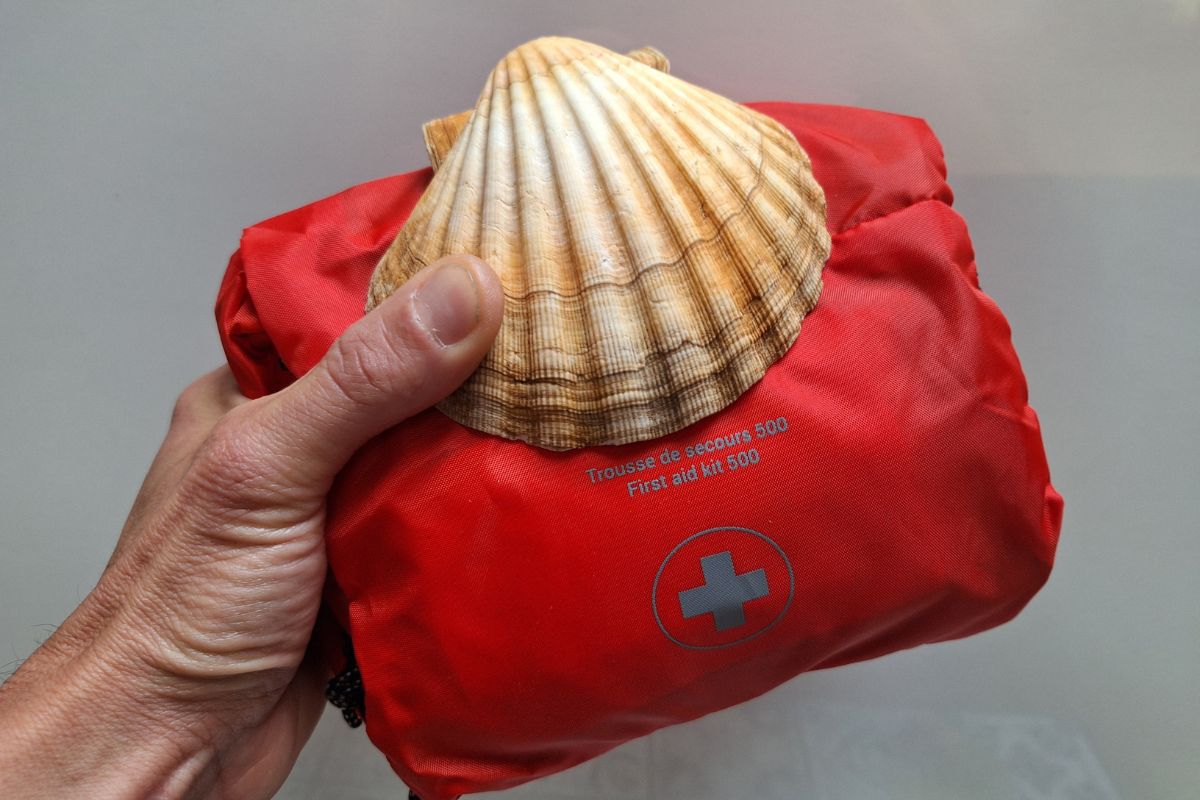
A first aid kit on the Camino de Santiago can make a difference in your experience
Essential Elements of the First Aid Kit
Before starting your adventure on the Jacobean routes, it’s crucial to know what to carry in the first aid kit. There are some essential elements that can make the difference between a comfortable walk and an unpleasant experience. Let’s look at the key components.
Basic Medications
First of all, if you are taking medication before doing the Camino de Santiago, you must bring it to continue with your treatment. Regarding your adventure, carrying the appropriate pilgrim medications is essential to prevent and treat common ailments during the Camino. Here is a list of the most important ones:
- Analgesics: These are vital for relieving headaches, muscle, and joint pains. Aspirin, paracetamol, or ibuprofen are recommended options.
- Anti-inflammatories: These medications help reduce inflammation and pain associated with minor injuries. Ibuprofen serves this function, but there are other specific ones like diclofenac.
- Antihistamines: If you are prone to allergies, these medications will be very helpful in controlling allergic reactions.
- Muscle Relaxant: A cream, gel, or spray with a relaxing action for your muscles can be a blessing while resting during the stage or at the end.
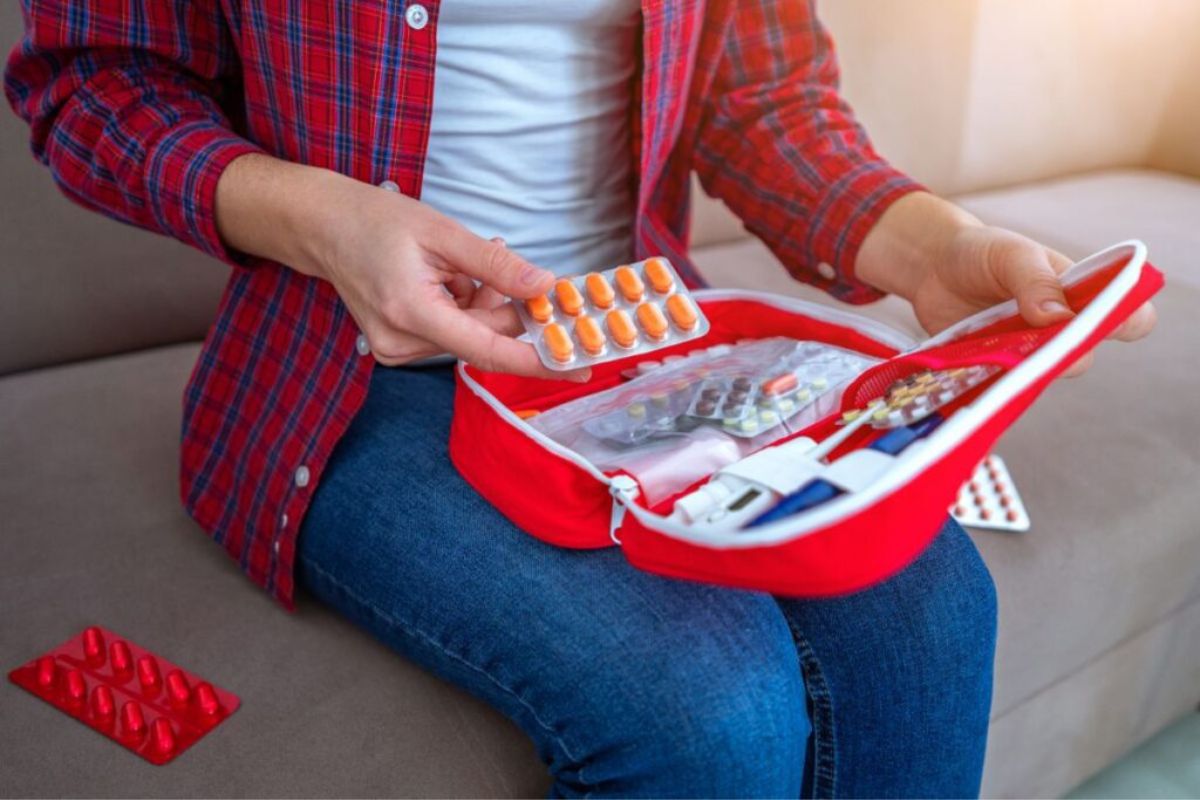
There are basics that you cannot forget to include in your first aid kit
Healing Material
Healing material is essential for treating wounds, abrasions, and blisters that may arise on the Camino. Here’s what should not be missing:
- Bandages and adhesive tape: Useful for immobilizing injuries and protecting wounds. Bring elastic bandages of different sizes.
- Plasters: Essential for protecting small wounds and abrasions. Have a variety of sizes in your kit.
- Sterile gauzes: To clean and cover larger wounds. Make sure to carry enough.
- Antiseptics: Help disinfect wounds and prevent infections. Iodine, mercurochrome, or hydrogen peroxide are good options.
- Scissors and nail clippers: The first to help you with bandages, and the second to keep nails under control.
- Blister pads: Specifically designed to relieve pain and protect blisters while they heal.
- Sterile needles: To drain large blisters. Make sure to disinfect them well before use.
- Latex gloves or hand sanitizer: To avoid infections while treating wounds or blisters.
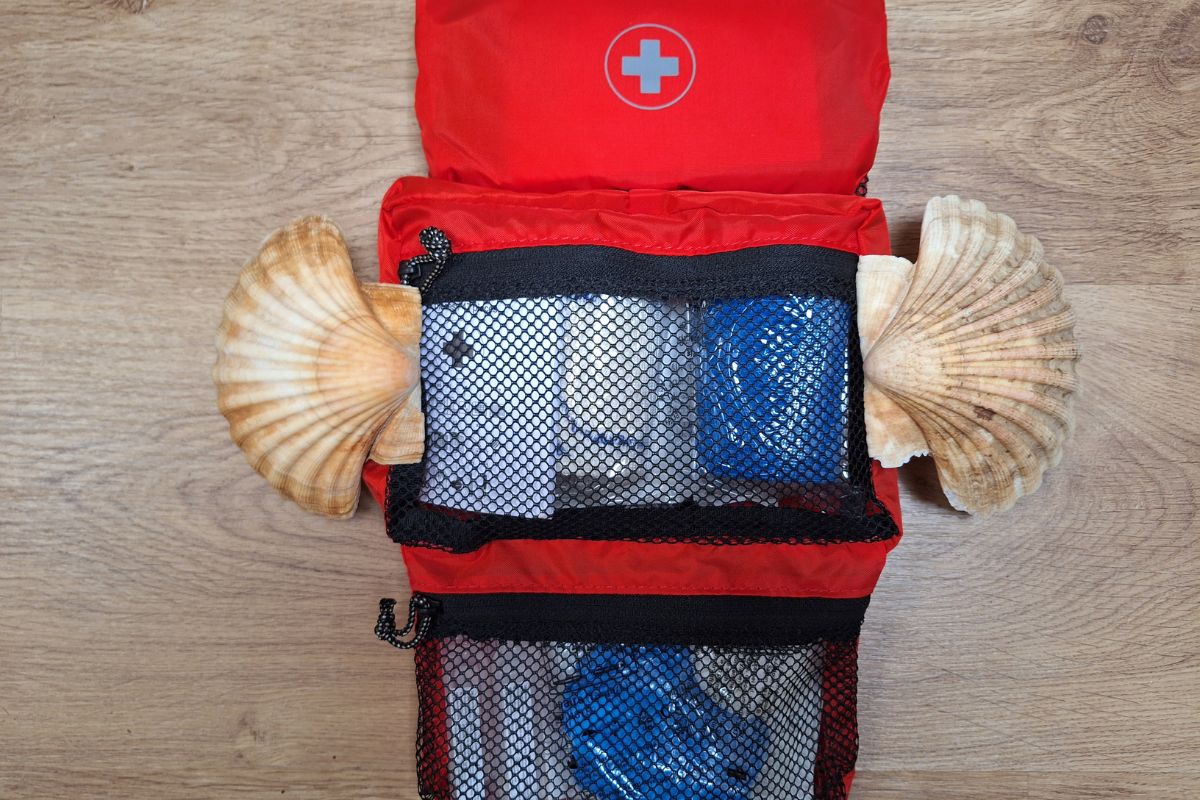
A simple, complete, and compact first aid kit is the best option for the Camino de Santiago
Skin Protection
Taking care of your skin is very important during long walks. Don’t be deceived if the sky is cloudy; being outside for several hours means the sun will always be present. Sun exposure and constant friction can cause serious problems if you don’t take proper precautions.
- Sunscreen: Protecting your skin from the sun is vital to avoid burns. Use a cream with a high protection factor.
- Vaseline: Helps prevent abrasions in sensitive areas. Apply it before starting to walk.
- Insect repellent: To avoid mosquito bites and other insects that can be annoying during your journey.
Foot Care Products
Your feet will be the protagonists of the Camino de Santiago. It’s essential to take good care of them to avoid problems that could ruin your experience.
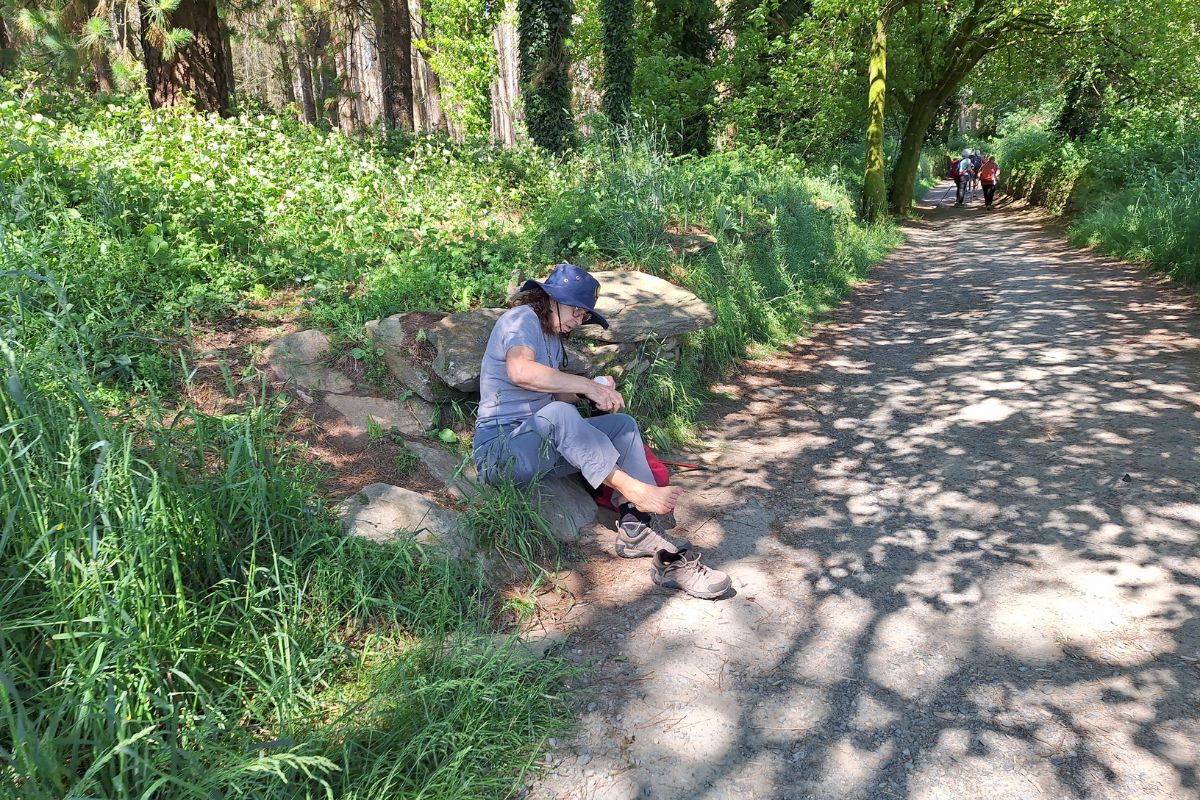
Taking care of your feet is always very important on the Camino
Anti-chafing Cream
Chafing can be very annoying and herald the arrival of blisters, so a good anti-chafing cream can prevent this problem. You can carry a specific cream for this purpose: apply it to areas where you feel more friction, such as the heels and toes.
Blister Treatment
Blisters are one of the most common ailments among pilgrims. You can prevent them with good previously worn footwear and the help of anti-blister socks, although remember, they are not magical.
If you encounter a blister, it’s advisable not to touch it if it’s not very painful: the skin acts as the best defense against infections. However, if it’s bothersome for walking, you can drain it by following these steps:
- Wash your hands and the blister with soap and water, then disinfect it externally with iodine.
- Clean a needle with alcohol to avoid contamination.
- Pierce the blister in several points to allow the liquid to drain.
- Do not remove loose skin and cover the blister with a sterile pad.
- Carefully monitor the blister. When the dead skin detaches on its own, remove it and disinfect the area again before covering it.
- If you experience complications or the blister shows signs of infection, seek medical attention immediately.
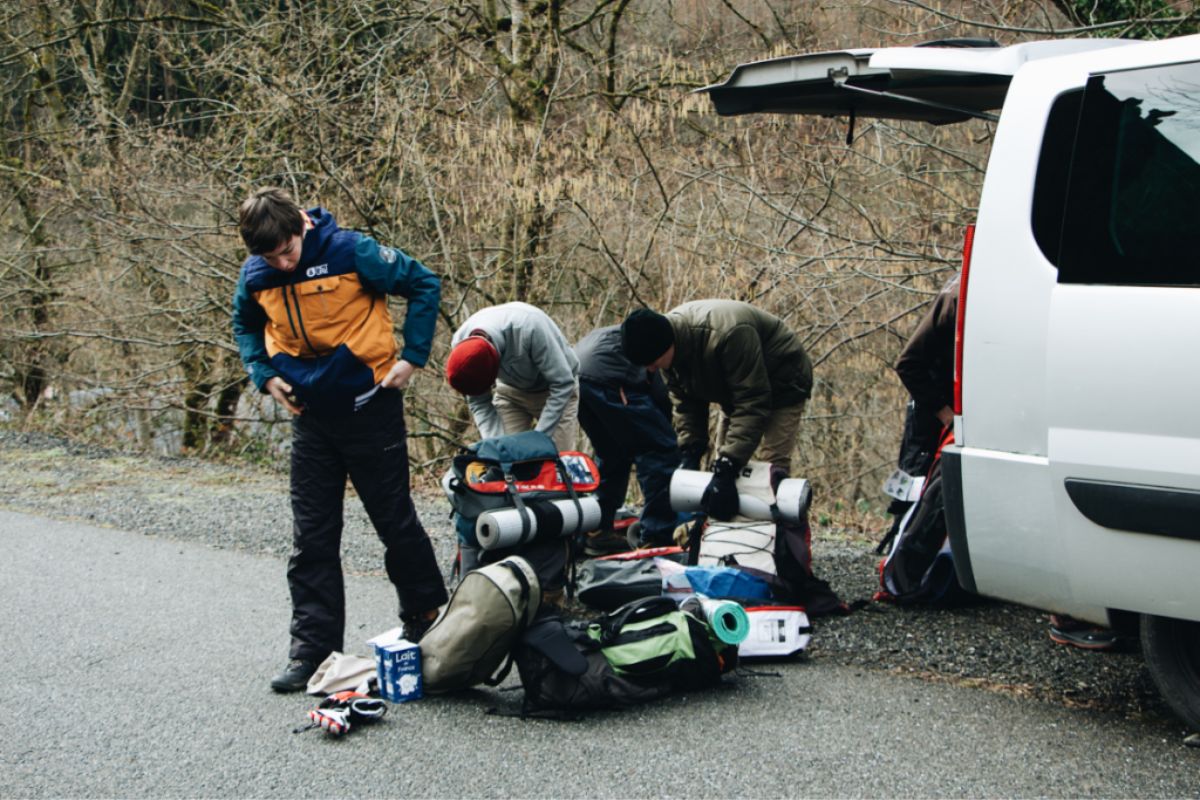
Pilgrims taking the first aid kit out of the backpack
Tips for Preparing and Using the First Aid Kit
Having a well-equipped first aid kit is just the first step. Here are some tips for preparing and using it effectively:
- Check expiration dates: Before leaving, make sure all products are within their usable date.
- Organize your kit: Keep everything in order to find what you need quickly in case of emergency.
- Know your kit: Familiarize yourself with all the elements of your kit and how to use them correctly.
- Personalize your kit: Add any medication or product you specifically need, such as medicines for pre-existing conditions.
- Stay well hydrated: Keeping yourself well-hydrated can prevent many health problems. Always carry enough water.
- Eat properly: You are not doing a triathlon, but you are subjecting your body to long walks. Nourish yourself well to maintain the necessary strength for each stage.
- Rest adequately: Listen to your body and take breaks when needed. This will help prevent injuries.
- Consult a doctor: If you have a special medical condition, talk to your doctor before starting the Camino to receive personalized recommendations.
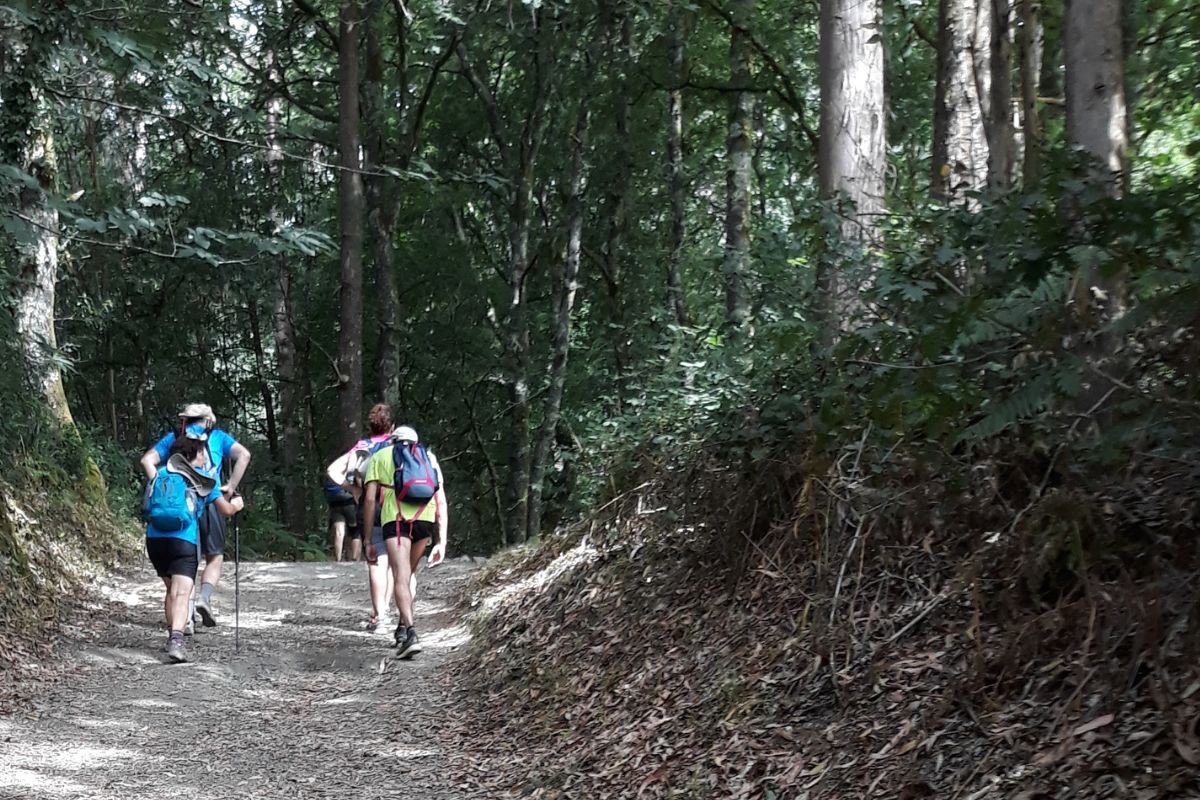
Pilgrim, be foresighted and bring a first aid kit to the Camino
Where to Get a Good First Aid Kit?
Once you have inventoried your first aid kit and bought everything in a pharmacy, you need to include it in your backpack. It is advisable to carry everything in a suitable small bag or case, as compact as possible, padded and waterproof. You can find it in any textile or accessory store and then put all the items from our previous list in it.
However, the most convenient option that we recommend is to buy a kit that already includes everything or almost everything. You can find them in any pharmacy or large sports store, and there are various models more or less equipped.
Other Prevention Items for the Camino
We also think that, to prevent injuries that you could treat with everything you carry in the first aid kit, there are certain things that can help. We refer to knee pads, ankle braces, and walking sticks. The first two, although they may seem useless, if bought in your size (very important!) can help prevent injuries. The warmth and support they provide, placed on the knee and ankle joints, allow you to face the Camino’s descents and ascents safely. In this sense, walking sticks can also be very useful.
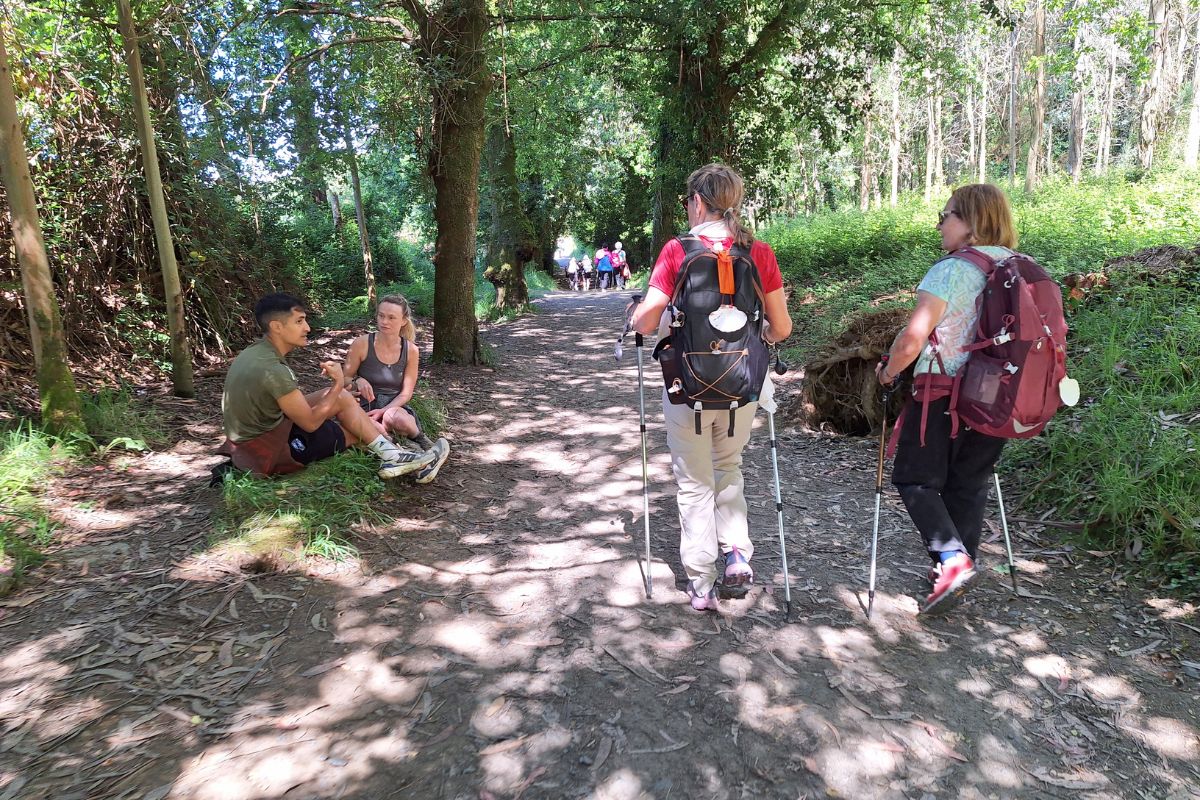
In addition to carrying a good first aid kit, carrying sticks or taking necessary breaks are good tips for doing the Camino
If you forget something, make sure to bring your health card, in case you need to buy something in a pharmacy or visit a medical center. In case of an emergency, call 112 or contact your travel insurance, which we always include in our trips.
A first aid kit doesn’t save lives, but it helps to cope with the Camino and bring it to a good end. Lacking a first aid kit can make you have to end your adventure before reaching Santiago, and that causes many tears. Besides being well equipped, you can assist your fellow pilgrims and other travelers. By following these tips and carrying the right elements, you’ll be ready to take care of your health on the Camino de Santiago.
To make your experience on the Camino unforgettable and positive, put a basic first aid kit in your backpack. Your body, and surely your mother, will thank you. Do it for yourself, for others, and for a safe Camino de Santiago.

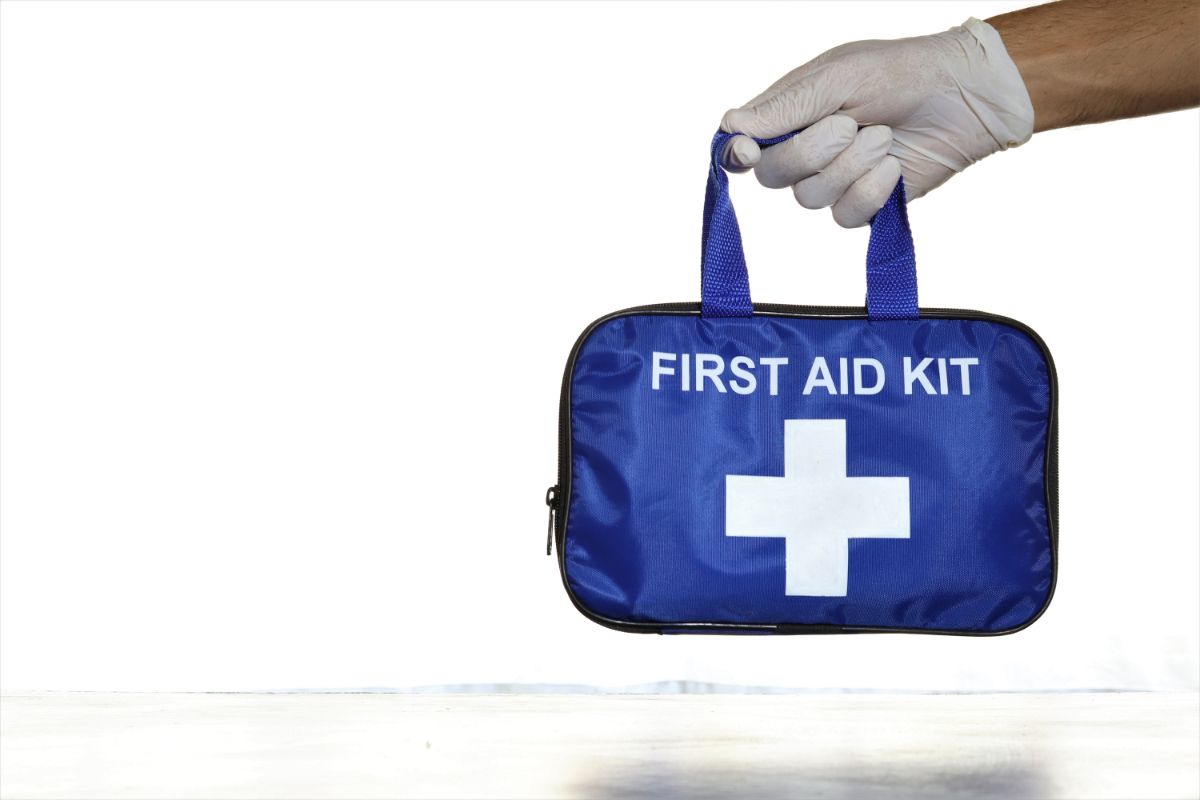










Leave A Comment